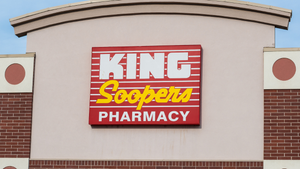To be green, economical and future-proofTo be green, economical and future-proof
The U.S. food retailing industry could soon adopt propane R290 as the refrigerant of choice.
November 20, 2018
Sponsored Content
Sponsored by Hussmann Corporation
Ever since American grocers began displaying meat, produce, and dairy products in ice and salt-cooled cases 101 years ago, food store refrigeration systems have continuously evolved, and are still advancing today.
Many small local grocers, regional food stores, and even the giant hypermarkets are relying upon merchandisers charged by Freon, hydrofluorocarbons (HFCs) and carbon dioxide (CO2) systems, but they’ll soon be learning more about propane R290 as the evolution continues.
What’s driving the change? Several key factors: Environmental responsibility, sustainability, economics, and advances in system design.
Propane R290 is a natural refrigerant that is non-toxic and scientifically proven to be environmentally safe. (It is different from the propane that is used to BBQ burgers, steaks, chicken and fish on gas grills outdoors.) R290 is specifically designed to be used as a refrigerant.
Its use as a refrigerant is gaining popularity in Europe, which has some of the most stringent environmental laws on the planet, but it also is beginning to generate substantial attention in the United States as well.
St. Louis, MO-based Hussmann Corporation recently became the first American manufacturer to design and engineer a refrigeration system charged with propane R290 for full-sized merchandising displays to refrigerate meat, produce, dairy products, beverages, and other perishables.
Environmentally friendly propane R290 has a tiny global warming potential (GWP) of 3 compared to commonly-used HFC refrigerants, which have GWP ratings greater than 1300. And, unlike Freon and other older refrigerants, propane R290 has an Ozone Depletion Potential (ODP) of Zero. Nada. Zilch.
The use of propane R290 as a merchandiser refrigerant could help solve a myriad of environmental and economic issues.
First, the Environmental Protection Agency estimates that an average supermarket using the HFC refrigerant R-404A leaks about 25 percent of its refrigerant charge annually. This results in more than 1,500 metric tons of CO2-equivalent emissions or the approximate annual energy use of 165 American households.
Multiply that number by the number of grocery stores, supermarkets, drug, dollar, and c-stores in local communities and across the nation, and it is easy to understand the magnitude of the problem. New regulations here and abroad that are focused on reducing the use of high GWP HFC refrigerants.
There’s new interest across America’s food retailing industry to consider using merchandisers that are charged with propane R290 to help grocery stores and the big chains achieve their corporate sustainability goals – being “green” -- and avoid regulatory issues over the refrigerants they use in their merchandising display units.
As for economic drivers, there are quite a few.
For example, Hussmann’s new micro distributed system -- microDS -- makes it easier and faster to install and maintain propane R290-charged merchandisers. That means there’s little to no downtime for grocers during installation, which represents a big savings.
The new system uses only 150 grams (just 5.3 ounces) of propane R290 per circuit, which greatly reduces the full store refrigerant charge by 90-95 percent compared to stores using HFC refrigerants, and that’s quite a financial and environmental savings.
Importantly, the small charge of propane R290 – 150 grams -- provides excellent refrigeration in full-sized, low- and medium-temperature grocery merchandisers, even open 5- and 6-multi-deck and reach-in units. And, because the high-quality refrigeration system is self-contained and hermetically sealed by the manufacturer, there is little to no risk of any leakage, which saves on service expense and safeguards the environment.
The new system also uses a closed water loop technology for rejecting the heat, which eliminates HFC usage. In other words, it is extremely efficient, reliable, and economical. Store management will greatly appreciate the new propane R290 system because it is environmentally safe, faster and cheaper to install, easier to maintain, and is highly reliable.
As for the future, it is clear the EPA along with environmental advocates will continue to push for changes in refrigerant charge sizes, eliminate refrigerant leaks, and work to decrease refrigerants’ impact on the ozone layer and climate change.
So, transitioning to propane R290 makes good sense to achieve greater sustainability, meet economic and reputational goals, and avoid entanglement over future state and federal regulations.
Bottom line: Propane R290 is the future and, in time, will be among the prominent – if not the dominant – refrigerant used by the American food retail industry.
You May Also Like




